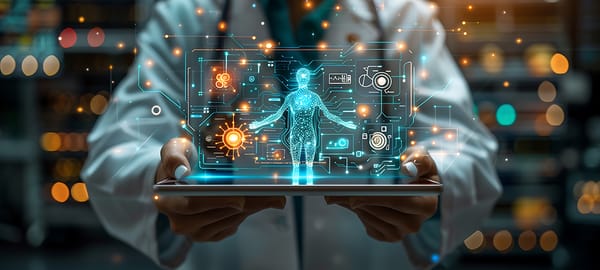Edge Data Centres: A Sustainable Solution to Meet Growing Demands

As the demand for data and processing power continues to skyrocket, driven by the exponential growth of data, cloud computing, artificial intelligence, and IoT, the data centre industry faces mounting pressure to keep up. Traditionally, large-scale data centres have been the answer. However, these expansive facilities bring with them significant challenges, including the strain they place on power networks, high infrastructure costs, and environmental impact. An alternative approach, which is gaining traction, involves repurposing small amounts of space within existing buildings as edge locations, helping to meet the increasing demand for data storage and processing without the need for building new large-scale facilities.
What are Edge Data Centres?
Edge data centres are smaller facilities located closer to the end user, designed to reduce latency by processing data locally, rather than relying on large, centralised data centres. These edge facilities can be situated within existing urban infrastructure, such as repurposed rooms or unused areas within office blocks, warehouses, or retail spaces. This concept, known as edge computing, offers a range of benefits when compared to the traditional model of constructing massive data centres.
Reducing Strain on Critical Infrastructure
One of the most pressing concerns with building large new data centres is the strain they place on critical infrastructure, especially power networks. Large data centres can consume vast amounts of electricity (and water), often requiring new power sources and distribution systems to be installed, which can stress already overburdened power grids. In addition, the expansion of these large facilities often demands significant investment in cooling infrastructure further increasing energy usage.
By comparison, Edge locations can alleviate these problems by distributing workloads across a network of smaller, decentralised facilities. By repurposing existing spaces within urban environments, edge data centres are typically more energy efficient due to the greatly reduced space and cooling demand which reduces the scale and power consumption of cooling infrastructure. This helps to prevent localised grid overloads and reduces the need for additional infrastructure to support energy-hungry data centres.
Environmental Benefits of Edge Data Centres
- Reduced Carbon Footprint
One of the most compelling environmental benefits of repurposing small spaces for edge data centres is the reduction in carbon emissions. Building new large data centres requires extensive construction, which in itself is a carbon-intensive process. Concrete production, transportation of materials, and construction machinery all contribute to the carbon footprint of these facilities. By contrast, repurposing existing buildings to house edge data centres reduces the need for new construction, saving resources and minimising emissions. Furthermore, because edge facilities process data closer to the source, they help reduce the distance that data must travel. This can lower energy consumption associated with data transmission, making the entire data processing system more energy efficient. - Improved Cooling Efficiency
Traditional data centres deploy large scale cooling infrastructure designed to cope with maximum load, however that can often mean reduced efficiency when demand fluctuates, leading to inefficient use of energy. Edge data centres can be designed to scale with demand, deploying smaller and more efficient infrastructure, taking advantage of alternative cooling solutions arising from the reduced heat output and physical location, such as repurposing into the surrounding building further reducing energy consumption. This not only improves energy efficiency but also helps to reduce the overall environmental impact of our ever-increasing dependency upon data, apps, and AI. Additionally, edge locations often take advantage of renewable energy sources, such as solar panels or wind turbines, which are easier to integrate into smaller, decentralised facilities than into massive data centres. By using clean energy, edge data centres can further reduce their carbon footprint. - Efficient Use of Space
Repurposing small, unused spaces within existing buildings for edge data centres helps to optimise the use of urban environments. Many buildings have underutilised spaces that can be transformed into small data processing hubs without the need for additional land or new infrastructure. This is particularly beneficial in densely populated cities where space is at a premium, and finding suitable land for new data centres is both difficult and costly. By making efficient use of existing space, edge computing helps reduce the pressure to develop new greenfield sites for large data centres, preserving natural landscapes and reducing urban sprawl.
Supporting a Greener Future
Edge data centres represent a sustainable solution to the challenges posed by the increasing demand for data storage and processing. By repurposing existing buildings, these smaller, decentralised facilities can significantly reduce the strain on critical infrastructure, optimise energy usage, and offer substantial environmental benefits. As the world continues to prioritise the reduction of carbon emissions and sustainable development, edge computing offers a promising way to meet the data needs of the future without compromising the planet’s resources.
For companies and governments alike, investing in the development of edge data centres is a step towards a greener, more resilient digital infrastructure, one that is necessary to scale and meet future demands while minimising environmental impact.




